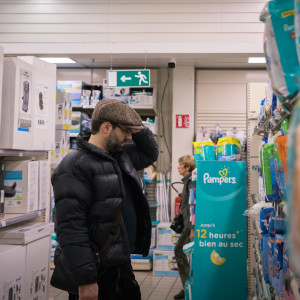The EMEA market encompasses more than 110 countries in Europe, the Middle East, and Africa. To successfully expand into EMEA markets, providing content in your customers' preferred language through translation is critical.
We also know that every language and culture is unique, and it would be impossible to be an expert in all of them. So we turned to professional Spanish, French, German, Italian, and Arabic translators who are native speakers, local experts, and specialists in the language.
Share your business email below to grab your guide on the top considerations when translating into some of the most used languages for EMEA markets.
Take a sneak peek at the chapters 👇
Chapter 1 - Spanish
Spanish is one of the most popular languages in the world
Spanish is spoken by over 580 million people in 110 countries, and not everyone uses it the same way. It’s essential to understand your target audience, your intent, and the overall meaning you’re trying to convey.
- There isn’t one “International Spanish”
- Spanish translations are longer
- Spanish is more complex
- Spanish requires different levels of formality
- Different countries have different cultural norms and references
Chapter 2 - French
French is the official language in 29 different countries and the United Nations
Over 275 million people speak French around the world. Across locales, you’ll find differences in grammar, cultural preferences, style, and tone.
- Anticipate longer translations
- French grammar is more complex
- The French language has more than one level of formality
- English tends to be more enthusiastic than French
- It’s okay to incorporate English into French
Chapter 3 - German
English and German share a root language!
You may already know words like delicatessen, kindergarten, schadenfreude, or Über. Start looking closely, and you’ll see similarities between German and English, especially in vocabulary, alphabet, and culture. While you’ll find many similarities between the two, there are still things to be aware of if you’re translating between English and German.
- German has additional letters
- German expands English text dramatically
- German grammar is more complex
- German requires more specificity
- German is more reserved
Chapter 4 - Italian
One of the most iconic romance languages, Italian is a close cousin to Latin.
As you decide which markets to expand to, Italian is undoubtedly an important language to consider. Today, 85 million people speak Italian, and not just in Italy. Here are some things to consider to solve the most common challenges when localizing for the Italian-speaking audience.
- Italian requires more context than English
- Italian requires different levels of formality
- Italian translations will be longer
Chapter 5 - Arabic
Arabic is one of the oldest languages in the world.
Arabic is an official language of more than 25 countries. Across the Middle East and Africa, you’ll hear more than 30 varieties of Arabic. It’s always hard to translate any text between two languages in a way that maintains the same meaning and style. The Arabic language, in particular, is one of the hardest to translate.
- Consider the cultural differences
- Some Arabic letters have no equivalents in English
- There is a need to shift the way of thinking
Smartling is the easiest way to simplify your translation processes and get to market faster at lower costs.
As with any new audience, we must approach the EMEA region with their unique cultural and linguistic differences in mind so that your content is truly engaging and resonating. How can you do that?
When you combine Smartling’s translation platform features with professional translators, you get:
- Tens of thousands of dollars saved
- Hundreds of thousands of human hours saved
- New languages launched in as few as two days
Learn more about our Translation Management Platform and Language Services.
We hope this expert guide is helpful as you look to take advantage of one of the fastest-growing markets in the world! Download your guide now to learn what to know when translating into some of the most used EMEA languages.










